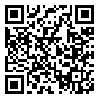BibTeX | RIS | EndNote | Medlars | ProCite | Reference Manager | RefWorks
Send citation to:
URL: http://sjsph.tums.ac.ir/article-1-5265-en.html

 , Hassan Eftekhar ardebili *
, Hassan Eftekhar ardebili * 
 2, Kamal Azam3
2, Kamal Azam3 
 , Mohammad reza Vafa4
, Mohammad reza Vafa4 
 , Mojtaba Azadbakht1
, Mojtaba Azadbakht1 
 , Tohid Babazadeh5
, Tohid Babazadeh5 
 , Shadi Fathizadeh1
, Shadi Fathizadeh1 

2- MD. Professor, Department of Health Education and Promotion, School of Public Health, Tehran University of Medical Sciences, Tehran, Iran ,
3- Ph.D. Assistant Professor, Department of Epidemiology and Biostatistics, School of Public Health, Tehran University of Medical Sciences, Tehran, Iran
4- Ph.D. Associate Professor, School of Public Health, Iran University of Medical Sciences, Tehran, Iran
5- Ph.D. Student, Department of Health Education and Promotion, School of Public Health, Tabriz University of Medical Sciences, Tabriz, Iran
Background and Aim : Milk and dairy products provide more than 50% of the calcium requirement in the daily diet of Iranians. In order to promote adolescents’ health and prevent the devastating effects of osteoporosis in adulthood, appropriate action should be taken to increase milk consumption among adolescents. The objective of this study was to increase milk and dairy products consumption among eighth-grade girl-pupils in Kamyaran City, Iran through designing and implementing an educational program based on the theory of planned behavior (TPB).
Materials and Methods : This was a quasi-experimental study conducted in 2014, including a total of 168 eighth-grade girl-pupils from two (out of six) schools, one as the intervention and the other as the control group, selected randomly by cluster sampling. The intervention group received education in 4 sessions, the educational tools being a pamphlet and a poster. Data were collected on the TPB constructs, food intake (by 24-hour dietary recall), and frequency of milk and dairy product intakes during the previous 3 days. All the participants completed the questionnaires at the beginning and 3 months after the intervention. The data were analyzed using the SPSS-18 software, the statistical tests being chi-square, independent-t and paired t-tests.
Results : The intervention brought about statistically significant increases in the mean scores of behavior intention, attitude, subjective norms, and perceived behavioral control (p<0/001). In addition, an increase was observed in the frequency of milk and dairy product intake, which was 0.36 units per day initially (p<0/001).
Conclusion : Considering the effectiveness and low cost of this intervention, expanding this program can potentially lead to a rise in milk and dairy products consumption among the pupils.
Received: 2015/09/12 | Accepted: 2015/09/12 | Published: 2015/09/12
| Rights and permissions | |
 |
This work is licensed under a Creative Commons Attribution-NonCommercial 4.0 International License. |



